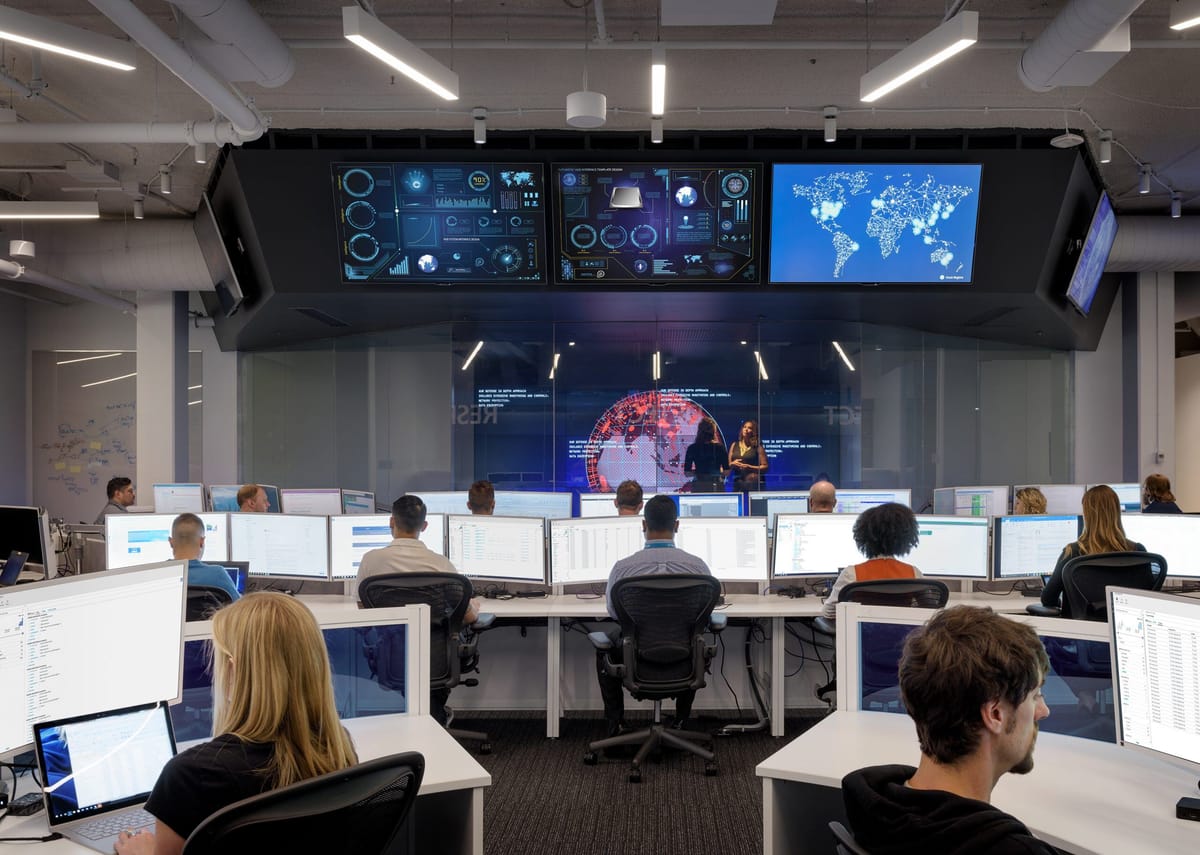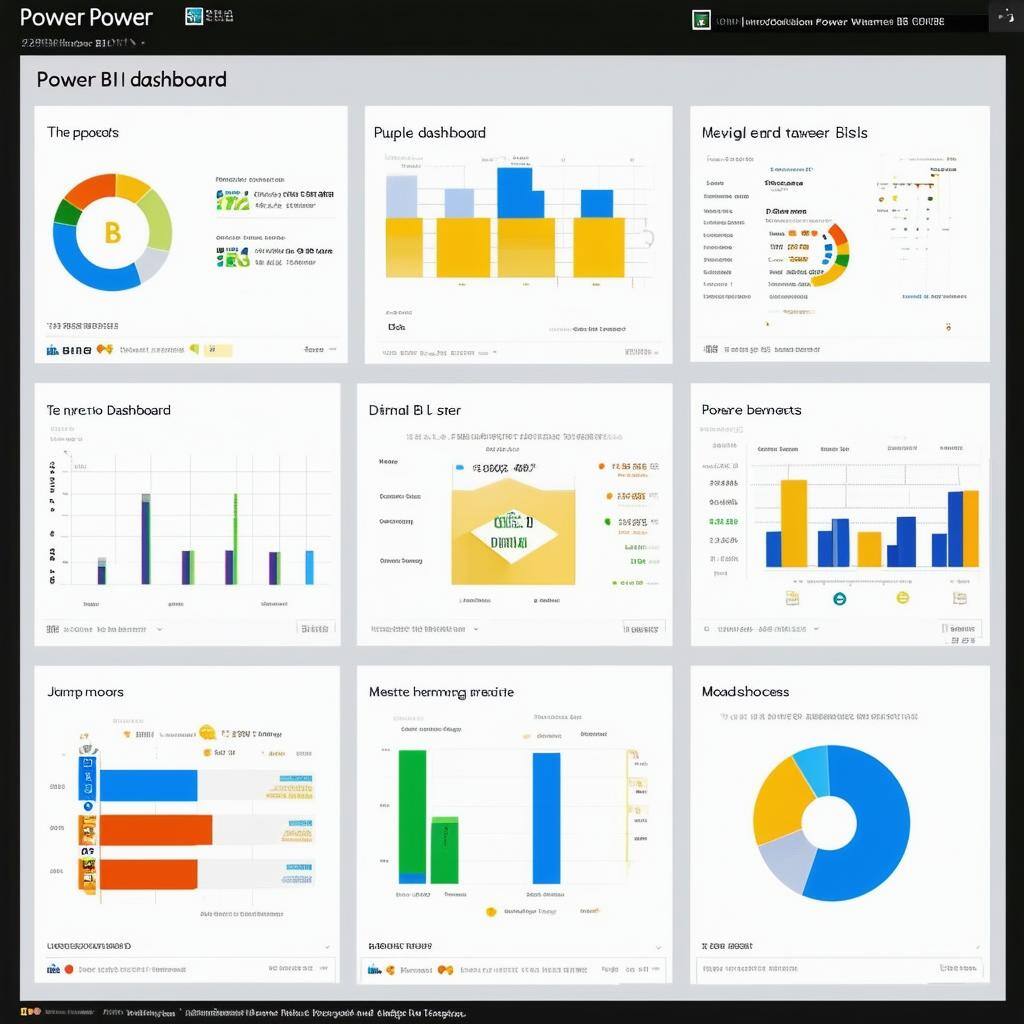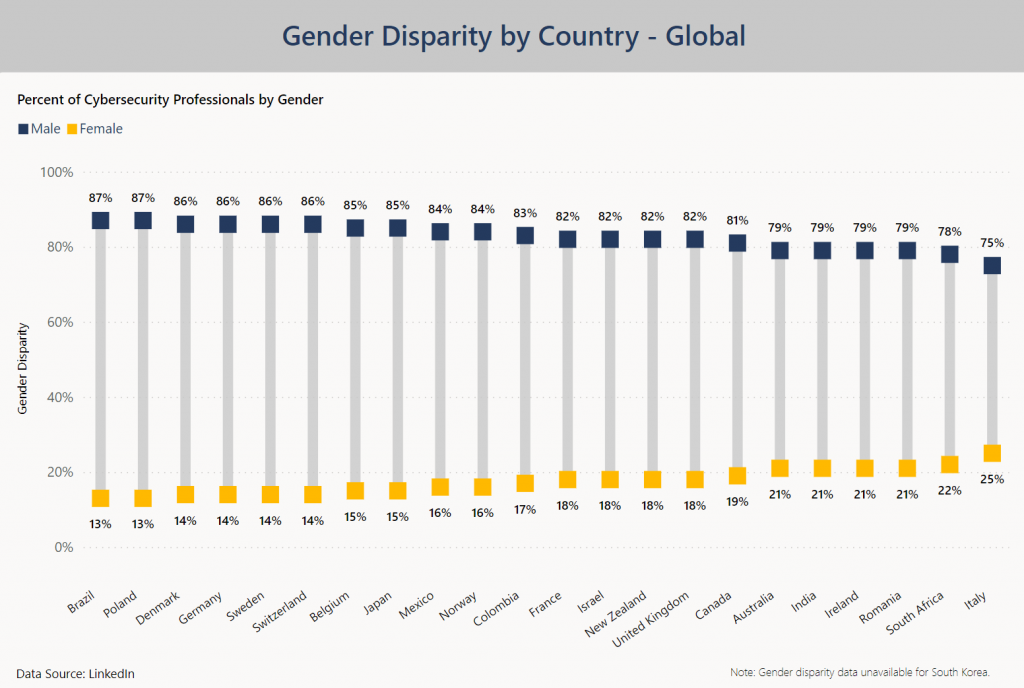Microsoft expands cybersecurity to bridge cybersecurity skill gap

Cybersecurity is still a major concern for governments, corporations, and individuals all across the world. Cybercriminals have become more skilled, and the threat environment has become more diversified, ranging from supply chain disruptions to ransomware attacks. These issues are compounded by a labor shortage; there simply aren’t enough people with the necessary cybersecurity skills to fill unfilled positions.
This is a worldwide issue. According to Cybersecurity Ventures, there will be 3.5 million cybersecurity positions open globally by 2025, a 350% growth over the last eight years. In the United States, we just announced a nationwide skilling drive, since one out of every two cybersecurity positions is now vacant. We’re collaborating with community institutions to help reduce the gap and broaden the profession’s diversity. Microsoft announced today that our cybersecurity skills program will now be available in an additional 23 countries.
Australia, Belgium, Brazil, Canada, Colombia, Denmark, France, Germany, India, Ireland, Israel, Italy, Japan, Korea, Mexico, New Zealand, Norway, Poland, Romania, South Africa, Sweden, Switzerland, and the United Kingdom will all benefit from the growth. These nations have a considerable cyber threat risk, as well as a significant gap in their cybersecurity workforces, both in terms of the number of cybersecurity experts employed vs. demand and in terms of diversity.
We’ve produced a Power BI dashboard based on our data to highlight the cybersecurity skills gap in these countries:

One of its objectives, as with our U.S. program, is to guarantee that traditionally underrepresented groups, like women, have access to the cybersecurity workforce. The global cybersecurity workforce is critically short in diversity: just 17% of the cybersecurity workforce is female in the nations where we are growing our campaign. Women are underrepresented in the cybersecurity field, which leaves talent on the table and impedes our ability to address the skills gap. This isn’t just about equality; there’s also a commercial argument to be made: organizations with a diverse workforce perform better.

Global-scale, meeting local needs
There are a few fundamental characteristics that are required throughout the world to overcome the cybersecurity skills gap:
To begin, you must first have a deeper understanding of the skills gap and exchange best practices. Users can’t solve a problem we don’t fully understand as a community, which is why Microsoft is forming a new partnership with the Organization for Economic Cooperation and Development (OECD) to not only conduct a detailed study on the skills gap in selected countries but also to improve the ability to grow cybersecurity workforces through postsecondary education and training. We will make this data publicly available, in collaboration with the OECD, to help policymakers and companies make better decisions, and we will assemble member nations to exchange lessons learned and best practices.
Second, everyone interested in pursuing cybersecurity as a career — whether students, career changers, or current IT professionals – must have access to industry-aligned skilling information to prepare for these vital jobs. As part of this expansion, we’re providing free cybersecurity training on our LinkedIn Learning platform, including courses like “The Cybersecurity Threat Landscape” and “Cybersecurity Foundations,” as well as free security courses on our Microsoft Learn platform, which has 47 Learning Paths and hundreds of hours of content.
Third, more instructors who are capable and prepared to educate cybersecurity students are needed, which is why we are collaborating with educational institutions to develop curricula. We offer free curriculum, educator training, and teaching tools to all higher education institutions through our Microsoft Learn for Educators program, which includes courses like Microsoft Security, Compliance, and Identity Fundamentals, Microsoft Azure Security Technologies certification, and more. We also give extra tools to instructors at all of these schools, such as free practice and certification examinations, curriculum integration help, and more. More than 1,000 higher education institutions from around the world have joined the initiative thus far.
Fourth, we must assist job applicants who are diverse and underprivileged. That’s why, using peer-to-peer learning and gamification, we’re partnering with Ecole 42, a tuition-free global computer science training program with a mission to educate the next generation of software engineers, to make Microsoft cybersecurity content available to its 15,000 learners around the world. We’re also partnering with Women in Cybersecurity, a charity dedicated to recruiting, retaining, and promoting women in the field of cybersecurity, to develop their student chapters in these 23 nations, assisting in the retention and promotion of women in the field.
Finally, there is no one-size-fits-all answer to the cybersecurity skills gap. Microsoft will work with local education institutions, nonprofits, governments, and businesses in each of the countries where we are expanding our campaign to develop a cybersecurity skills program that fits the unique needs of their market, based on data about the cybersecurity skills gap in each country. That said, we’re constructing the framework around a shared set of requirements and ensuring that current technologies are made more accessible.
Global expansion
Work is already underway. Here are just a few examples, and we’ll share more details about countries’ plans in the coming weeks and months:
Colombia’s government has launched a national cybersecurity capacity-building plan, which includes the deployment of professional training programs in areas such as digital security, information security, cybersecurity, and critical infrastructure. Our cybersecurity skills work in Colombia will contribute to this endeavor by assisting people in acquiring cybersecurity and digital skills that are in high demand. That’s why we’re partnering with the Servicio Nacional de Aprendizaje (SENA), a Colombian public institution that provides free vocational training to millions of Colombians, the Universidad de Los Andes, a major private university in Colombia, and local nongovernmental organizations to offer a “train the trainers” program that will equip over 68,000 Colombians, including 20,000 women, with the skills they need to help fill the many open cybersecurity jobs.
They’re expanding our current CyberShikshaa initiative in India, which is helping to bridge the gender gap in the cybersecurity profession. Since 2018, we’ve provided technical cybersecurity training to young women, as well as mentorship from industry professionals, particularly women leaders in the sector, and job placement aid with major firms. India’s cybersecurity sector is expected to have 1.5 million employment openings by 2025. According to India’s Labor Bureau, this reflects a 42 percent skill shortfall, although cybersecurity employment growth is expected to expand by 32 percent by 2028. The need is there, but more has to be done to accommodate it; most colleges and technical schools do not offer cybersecurity courses.
That’s why we’ve teamed up with ICT Academy, an Indian NGO, to provide cybersecurity training programs for professors and students at 100 institutions across five states, with a focus on rural universities. We’ll help more professors become cybersecurity trainers through our project, CyberShikshaa for Educators, and then give students with cybersecurity training and job placement aid to help them find new employment. We plan to teach around 6,000 students in the first phase, after which we will work with our partner network to link students to career opportunities and internships.
A look at our U.S. progress – and a look to the future
We’ve made progress in the five months since we introduced our cybersecurity skills for jobs campaign in the U.S. We now partner with 135 community colleges around the United States to provide free curriculum, educator training, and teaching tools. Through the American Association of Community Colleges, we’re sharing cybersecurity best practices with schools, the first of three cohorts for which we’re offering funds to finance technical assistance to help them accelerate their cybersecurity programs. Finally, we’re awarding scholarships to individuals pursuing a cybersecurity degree or certification. We’re learning a lot and will provide more information in the coming months.
Every day, the number of cybersecurity assaults increases throughout the world, and the sophistication of these attacks grows as cybercriminals ramp up their activity. No matter where they reside, everyone will be affected. We must invest in the cybersecurity workforce to guarantee that there are enough people with the necessary skills to counter these assaults and preserve the digital ecosystem, ensuring that enterprises and individuals are safe.
Here at CourseMonster, we know how hard it may be to find the right time and funds for training. We provide effective training programs that enable you to select the training option that best meets the demands of your company.
For more information, please get in touch with one of our course advisers today or contact us at training@coursemonster.com




Comments ()